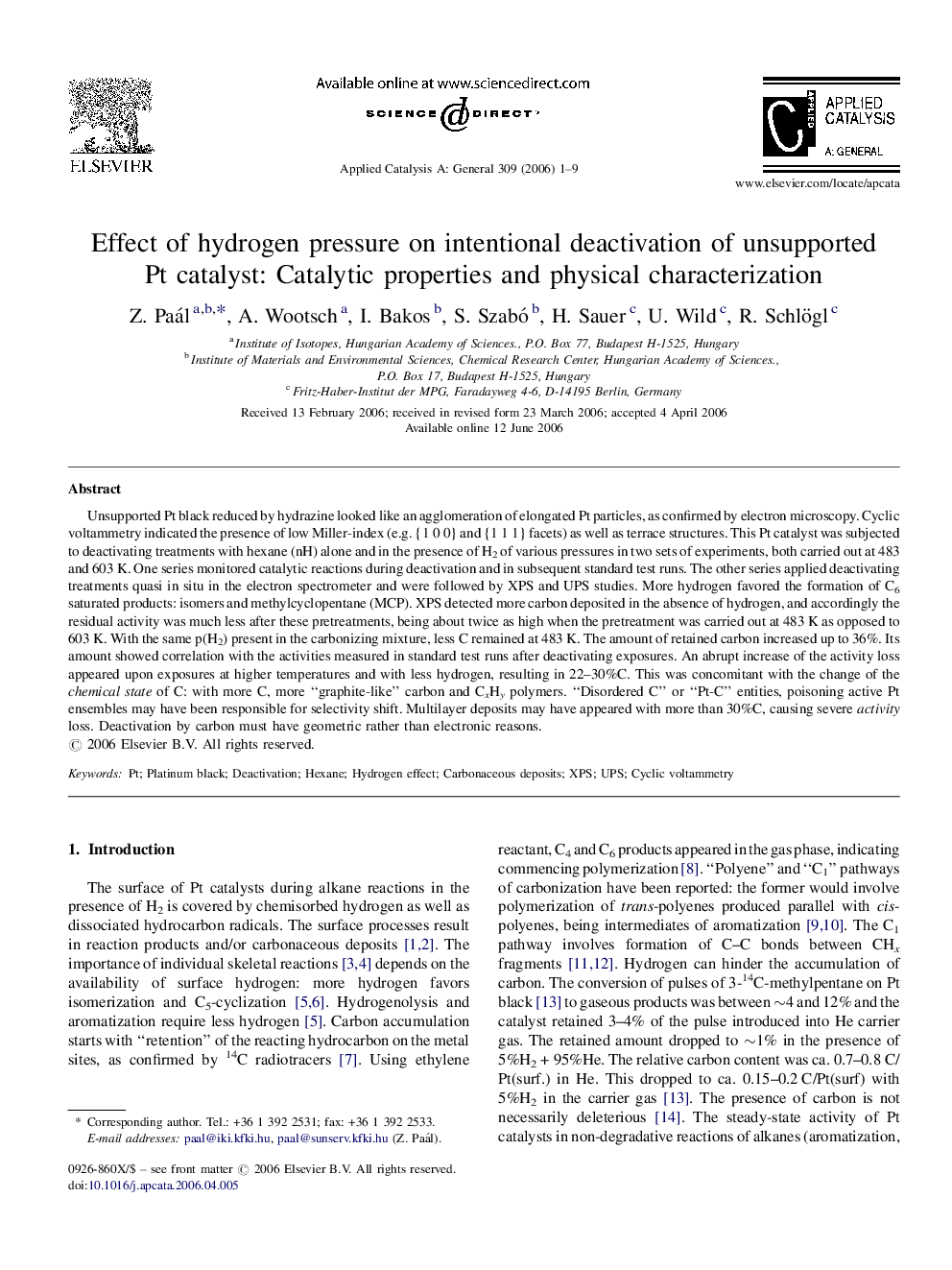| Article ID | Journal | Published Year | Pages | File Type |
|---|---|---|---|---|
| 43777 | Applied Catalysis A: General | 2006 | 9 Pages |
Unsupported Pt black reduced by hydrazine looked like an agglomeration of elongated Pt particles, as confirmed by electron microscopy. Cyclic voltammetry indicated the presence of low Miller-index (e.g. {1 0 0} and {1 1 1} facets) as well as terrace structures. This Pt catalyst was subjected to deactivating treatments with hexane (nH) alone and in the presence of H2 of various pressures in two sets of experiments, both carried out at 483 and 603 K. One series monitored catalytic reactions during deactivation and in subsequent standard test runs. The other series applied deactivating treatments quasi in situ in the electron spectrometer and were followed by XPS and UPS studies. More hydrogen favored the formation of C6 saturated products: isomers and methylcyclopentane (MCP). XPS detected more carbon deposited in the absence of hydrogen, and accordingly the residual activity was much less after these pretreatments, being about twice as high when the pretreatment was carried out at 483 K as opposed to 603 K. With the same p(H2) present in the carbonizing mixture, less C remained at 483 K. The amount of retained carbon increased up to 36%. Its amount showed correlation with the activities measured in standard test runs after deactivating exposures. An abrupt increase of the activity loss appeared upon exposures at higher temperatures and with less hydrogen, resulting in 22–30%C. This was concomitant with the change of the chemical state of C: with more C, more “graphite-like” carbon and CxHy polymers. “Disordered C” or “Pt-C” entities, poisoning active Pt ensembles may have been responsible for selectivity shift. Multilayer deposits may have appeared with more than 30%C, causing severe activity loss. Deactivation by carbon must have geometric rather than electronic reasons.
